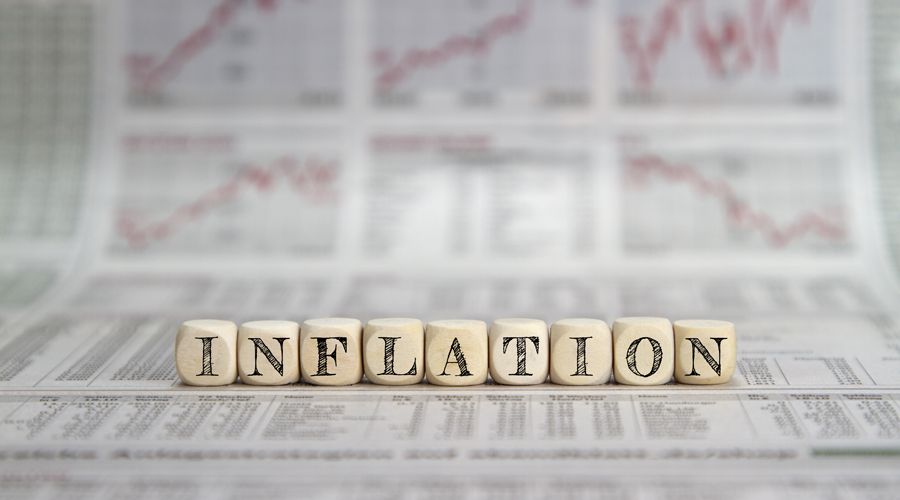What is the similarity between inflation and diabetes? Well, as far as similitudes go, it couldn’t be more evident. Both are silent killers, one upends your health and the other spooks the well-being of your portfolio. The likeness does not end there — the impact of both can be contained if the right sort of therapy (or strategy, if you will) is applied, preferably aided by professional advice.
We shall leave diabetes to medics, but as for the other regressive ailment influencing the state of your portfolio, we will discuss how it hurts all sorts of number-crunching exercises. Calculations related to investment performance, returns projection, income assessment and the like are all subject to inflationary pressures. These should be worked out only after factoring in its impact. The truth, however, is that investors rarely conduct such an exercise in real life.
Therefore, when you say “I have generated a profit of 20 per cent from my investment in Asset A” or “I have received an annual return of 8 per cent from my allocation to Asset B” you usually delude yourself. If you are not taking into account the ruling inflation rate (and the rates that held good in the preceding years when these assets were held), your estimate is incorrect.
A quick insight into one of life’s harshest realities will be necessary in this context. Price-rise, whether demand-pull or cost-push (the two causes that all economic text books diligently propound), eats into your returns at every stage.
Considering that the average retail inflation is 5 per cent, the picture is far from pretty. I am referring to Consumer Price Index here, but even at a far lower 2-2.5 per cent, the Wholesale Price Index is a menace as well. The point is that the rate of inflation is certainly not a constant; it is a protean and wavering idea, the presence of which cannot be expelled from our lives.
A challenge
It, therefore, stands to reason that inflation is no mean challenge for investors. The latter, in fact, would do well with inflation-indexed investment products. Performance projections/estimates should be done in a realistic manner on the basis of this concept. All allocations and returns generated by them over different holding periods (‘time’ is a major factor) should also be seen through this prism.
There are a few practical issues that all investors face. Let’s assume you are a big champion of fixed deposits and do not wish to think much beyond FDs, come what may. And you keep renewing your principal amounts (many even do the same with maturity values). How much do you think inflation has eaten into your “assured returns”? A lot actually over the years, considering that inflation is a variable while your FDs generate only fixed returns.
As things stand, the official inflation figures are announced every month by the government in keeping with its disclosure policy. Managing the latest inflationary trends is the banking regulator’s most formidable task. At the moment, the CPI stands at 5.5 per cent (in March), higher than the 4 per cent or so recorded in January. Rise in input costs and supply disruptions because of the pandemic are among the principal reasons why prices have escalated in recent days.
A solution
This is also the reason why no piece of your surplus should be left idle. Your money (in bits and pieces, perhaps, but all of it) should work constantly for you. Thus, nothing should be left in current and savings accounts without a serious reason. Your current account earns nothing, keeping money there is nearly as good as holding cash. And your savings account fetches you about 3 per cent annually, given today’s general banking norms. There is much to ask for in the context of the 5 per cent inflation I have already mentioned earlier.
Here is what you may do:
Form compartments in keeping with your investment goals — short-, medium- and long-term. Imagine you are a debt fund investor. The money you need to deploy, for instance, within three to six months may be parked in low-duration or ultra short term debt funds. A one-year horizon would give you a better leeway of sorts; you would be free to choose the next higher category from the debt funds universe.
Work out the impact of inflation on your holdings in a given financial year when you sit down with the final figures. This is a typical year-end exercise that most of us compulsorily do, especially when tax-paying season commences.
Remember, income by way of dividend and capital gains (loosely bracketed under the broad term “profit”) is generated when these are actually provided or booked. Else, it all stays within the realm of “notional profit”. At a very basic level, you do not have to worry too much about what remains notional — it is not actual yet, after all.
Inflation indexing
This, of course, would be a saving grace for the investor community, especially the sections that depend primarily on guaranteed-income savings products. While inflation-indexed options are not easy to come by, the need to protect both principal and interest cannot be overemphasised.
Such sections are often reluctant to look at other, dynamic asset classes because of their dependence on the markets (read: variable returns). However, in the context of all their conservatism, the probability of generating negative real returns will pose an enormous problem.
Nothing is more frustrating for an investor who, despite all his aspirations and hard work, secures negative yield at the end of the day. Positive real returns (certainly after inflation, and also after taxes) is a lofty ideal worth the chase.
The writer is director, Wishlist Capital Advisors











